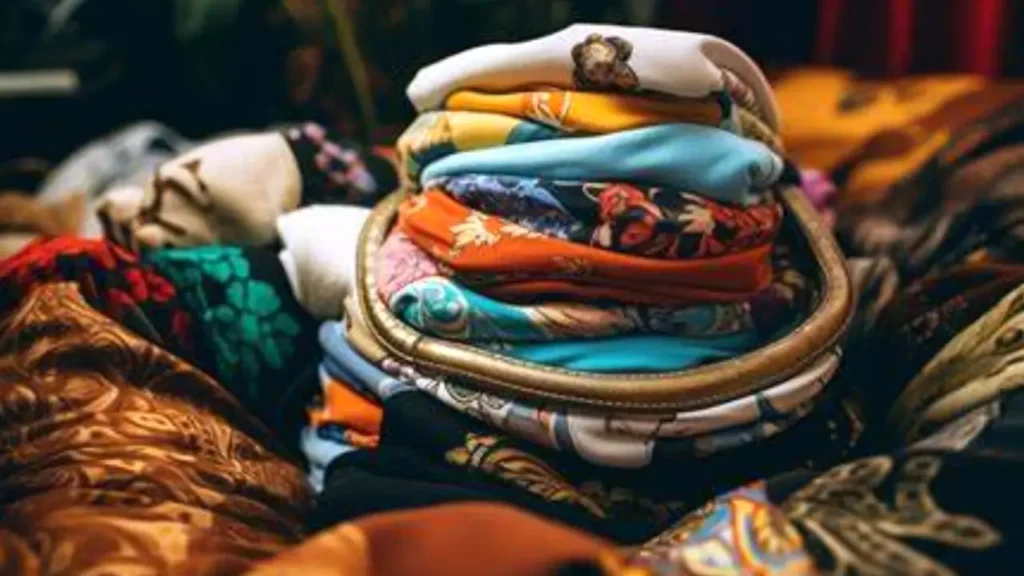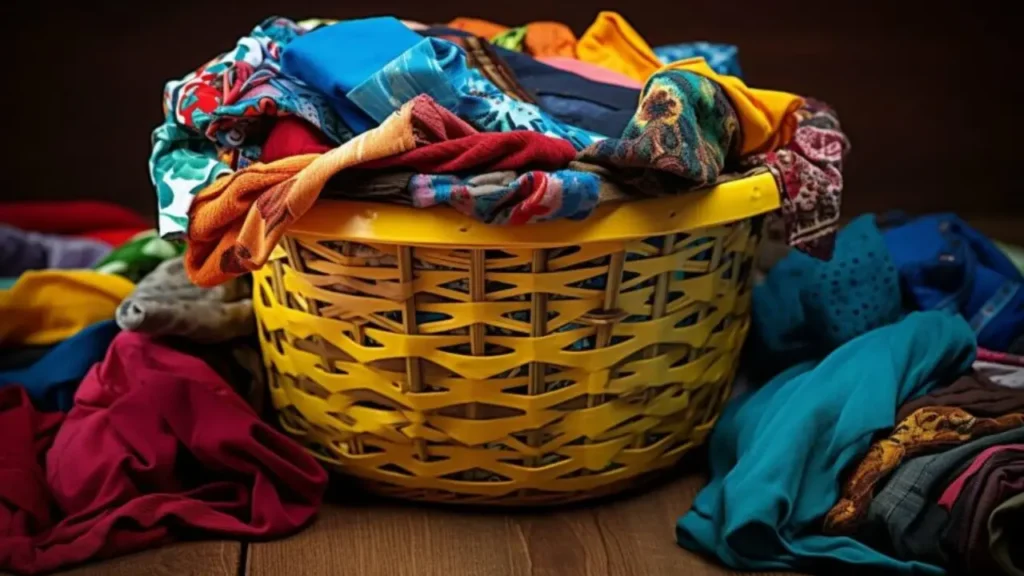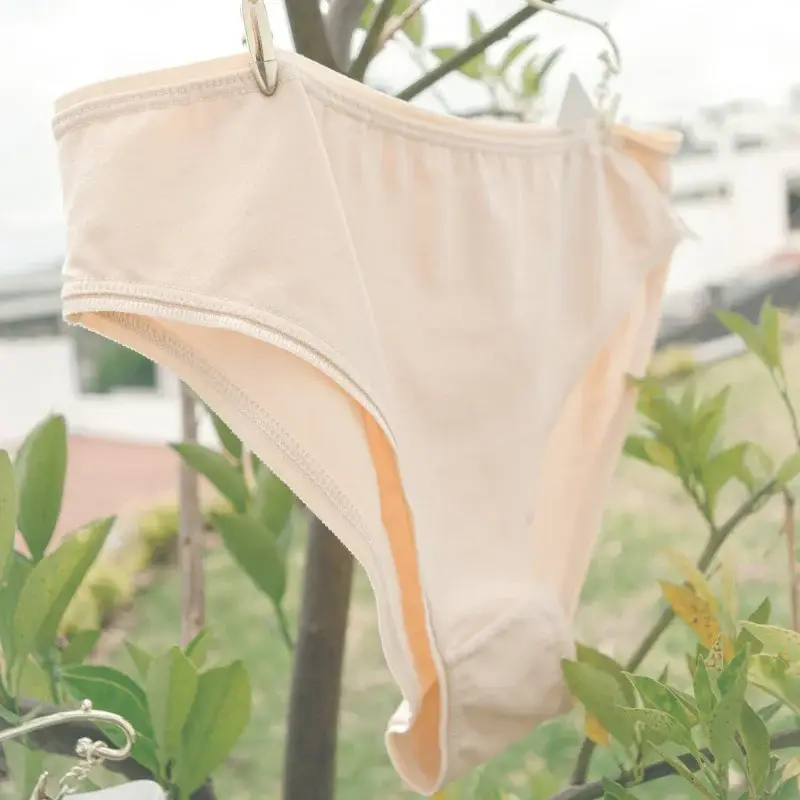Got a drawer overflowing with old underwear? You’re not alone! Instead of just tossing them, there are surprisingly creative and useful ways to give those worn-out garments a new life.
From simple cleaning cloths to more imaginative craft projects, let’s explore some eco-friendly and resourceful ideas for what to do with your old undies before they head to the landfill.
Old Underwear Signs

Time to face the facts: those trusty undies might be signaling it’s time for retirement! Recognizing the signs of wear and tear is key to maintaining hygiene and comfort. Plus, making room for fresh, new pairs, perhaps even some stylish wholesale options from Friendtex, can feel surprisingly refreshing.
Let’s explore some telltale signs that your old underwear has reached the end of its journey.
Loss of Elasticity
That once-snug waistband now feels loose and saggy, offering little to no support. The leg openings might also stretch out, leading to unwanted shifting and discomfort throughout the day. This loss of elasticity not only affects the fit but also compromises the garment’s ability to stay in place and provide proper coverage.
Visible Wear and Tear
Keep an eye out for telltale signs of fabric fatigue. This includes holes, rips, or tears in the material, especially in high-friction areas. Thinning fabric that becomes see-through or frayed edges also indicate that the underwear has reached its limit and is no longer providing adequate protection or a smooth silhouette.
Fading and Discoloration
While some fading is natural over time, significant discoloration, especially staining that doesn’t come out with washing, is a strong indicator it’s time to say goodbye. The fabric may also lose its original vibrancy and appear dull or lifeless, signaling that the material has broken down and is past its prime.
Lingering Odors
Despite your best laundering efforts, persistent odors that remain even after washing are a clear sign that bacteria have become deeply embedded in the fabric fibers. This can compromise hygiene and lead to discomfort. If your underwear consistently smells less than fresh, it’s definitely time for a replacement.
What to Do with Old Underwear

Before you toss that pile of well-loved underwear, consider this: they might have more life in them than you think! Embracing a more sustainable mindset can lead to surprisingly creative solutions for repurposing textiles. From practical uses around the house to fun craft projects, giving your old underwear a second act can be both eco-friendly and resourceful.
Let’s dive into ten interesting ways to breathe new life into those retired undergarments.
Cleaning Rags
Soft cotton underwear makes excellent cleaning cloths for dusting, polishing furniture, or wiping down spills. Their absorbent nature and gentle fabric won’t scratch delicate surfaces. Cut them into usable sizes and keep them handy for quick cleanups around the house or in the garage. Once they’re truly done, they can be discarded responsibly.
These repurposed rags are not only cost-effective but also reduce your reliance on disposable paper towels, contributing to less waste. Keep a stash in your cleaning caddy, under the sink, or even in your car for unexpected messes. You’ll find their softness and flexibility make them ideal for reaching tight corners and polishing various materials effectively.
Dusting Mitts
Transform an old pair of underwear into convenient dusting mitts. Simply slip your hand inside, and the fabric will grab dust particles effectively. This method allows for better grip and maneuverability compared to using a loose cloth, making dusting shelves, blinds, and other surfaces much easier.
The snug fit ensures the fabric stays securely on your hand as you navigate around objects. Once one side gets dusty, simply flip it over to use the clean side, maximizing its utility. When they get too soiled, just toss them in the wash with your regular laundry for reuse, making them a sustainable alternative to disposable dusting tools.
Polishing Cloths
The soft fibers of cotton underwear are perfect for polishing shoes, silverware, or even your car’s dashboard. They won’t leave scratches and can effectively buff surfaces to a shine. Keep a few pieces in your shoe care kit or with your cleaning supplies for those finishing touches.
Their gentle texture is especially beneficial for delicate items, ensuring you can polish without fear of damage. The absorbency of the fabric also helps in applying and buffing polishes or waxes evenly. By repurposing your old underwear in this way, you’re finding a practical use for something you might otherwise discard.
Plant Ties
Cut strips of sturdy fabric from old underwear to use as soft plant ties in your garden. These fabric ties are gentler on stems than harsh twine or plastic ties, preventing damage as your plants grow. They are also biodegradable, making them an eco-friendly choice for supporting your greenery.
The flexibility of the fabric allows you to secure stems to stakes or trellises without constricting their growth. As the fabric ages and breaks down naturally, it won’t leave behind harmful plastic residue in your garden. This is a simple yet effective way to give your old underwear a practical outdoor purpose.
Pet Toys
For pet owners, old cotton underwear can be transformed into simple and safe toys for your furry friends. Braided strips can become tug-of-war toys, while knotted pieces are great for chewing. Ensure you remove any small parts like hooks or eyes that could be a choking hazard.
The soft fabric is generally safe for pets to mouth and play with, although supervision is always recommended to prevent ingestion of large pieces. These homemade toys can provide hours of entertainment for your pets and are a cost-effective alternative to store-bought options. Plus, they carry your familiar scent, which can be comforting for your animal companion.
Stuffing Material
Shredded pieces of old underwear can be used as stuffing for small pillows, pet beds, or even soft craft projects. The soft fabric provides a comfortable and lightweight filling. This is a great way to utilize even the most worn-out pieces that are no longer suitable for other repurposing methods.
By using shredded fabric as stuffing, you’re giving it a new purpose and reducing textile waste. It’s an economical option for filling projects that require a soft and pliable material. Just ensure the shredded pieces are small enough to prevent any potential hazards, especially if used for pet items.
Craft Projects
The fabric from old underwear can be incorporated into various craft projects. Cut them into strips for weaving, use them as fabric scraps for patchwork, or even dye them for unique textile art. Their softness and flexibility make them versatile for different creative endeavors.
Consider using them in scrapbooking, mixed media art, or even creating small fabric pouches. The unique textures and patterns of the original garments can add an interesting element to your artistic creations. This is a fantastic way to explore your creativity while also practicing sustainability.
Cleaning Sponges
Layer and stitch together pieces of old underwear to create reusable cleaning sponges. The multiple layers will provide some scrubbing power, and the fabric is absorbent for wiping surfaces. Once they get dirty, simply toss them in the washing machine to clean and reuse.
These homemade sponges are an eco-friendly alternative to disposable synthetic sponges. They can be used for washing dishes, cleaning countertops, or even scrubbing bathroom surfaces. Their softness ensures they won’t scratch delicate items, and their reusability helps reduce household waste.
First-Aid Supplies
Clean pieces of old cotton underwear can be used as temporary bandages or wound dressings in a pinch. Their softness and breathability make them suitable for covering minor cuts or scrapes until you can access proper medical supplies. Keep some clean pieces in your first-aid kit for emergencies.
While not a long-term solution, having clean fabric available can be helpful for immediate care. Ensure the fabric is clean and free of any detergents that might irritate the wound. This is a practical and resourceful way to utilize something you already have on hand in an unexpected situation.
Compost Material
If your old underwear is made of 100% natural fibers like cotton, they can be composted in small pieces. Remove any elastic or synthetic components first, as these will not break down. Natural fibers will decompose and enrich your compost pile, contributing to a more sustainable gardening practice.
Composting textiles made from natural materials helps to reduce the amount of waste sent to landfills. The organic matter breaks down and provides valuable nutrients for your garden soil. This is a truly circular way to give your old underwear a final, beneficial purpose in the natural cycle.
Can Underwear Be Recycled
Yes, underwear can indeed be recycled, although it’s not as straightforward as tossing paper or plastic in your curbside bin. Traditional thrift stores usually don’t accept used underwear for sanitary reasons, but there are specialized textile recycling programs and innovative companies that are tackling this issue to divert textiles from landfills.
Several options exist for recycling your old undergarments. Some brands, like Subset and Hanky Panky, have take-back programs where you can mail in used underwear (from any brand in some cases) and they ensure it’s properly recycled, often into materials like insulation or carpet padding.
Additionally, organizations like TerraCycle partner with brands for specific textile recycling initiatives. You can also search for local textile recycling centers that accept clothing and other fabrics, though it’s always best to confirm if they handle underwear specifically.
How to Recycle Old Underwear

Got some well-loved undies that have seen better days? Instead of tossing them in the trash, consider giving them a second life through recycling! While it might not be as straightforward as recycling paper or plastic, there are definitely eco-conscious ways to handle your old undergarments. Let’s explore some options for how to recycle your old underwear responsibly.
Textile Recycling Programs
Seek out textile recycling facilities or collection points in your area. Some organizations and municipalities accept clothing and other textiles, including underwear, for recycling. These programs often sort the materials and process them into new fibers that can be used for various applications, such as insulation, carpet padding, or even new clothing.
Upcycling and Repurposing
Get creative and explore ways to upcycle your old underwear. Depending on the fabric and condition, you can cut them into cleaning cloths, use them for small craft projects, or even turn them into stuffing for pet beds or pillows. This gives the fabric a new purpose and keeps it out of the landfill.
Donation (When Appropriate)
While heavily worn underwear isn’t suitable for donation to most charities for hygiene reasons, some textile recycling initiatives might partner with charitable organizations. Research local donation centers to see if they have specific textile recycling programs or know of facilities that accept worn-out garments for processing.
Consider the Fabric Content
The recyclability of your underwear often depends on the type of fabric. Natural fibers like cotton are sometimes easier to recycle than synthetic blends. When purchasing new underwear, considering materials that are more easily recyclable at the end of their life cycle can be a more sustainable choice in the long run. Perhaps explore the offerings of wholesalers like Friendtex, who may have eco-conscious options in their collections.
How to Dispose of Underwear

When your underwear has truly reached the end of its usable life, proper disposal is key to minimizing environmental impact. While simply tossing them in the trash is the most common reaction, it contributes to landfill waste. Exploring more sustainable disposal methods, even if they aren’t traditional recycling, can make a difference.
Here are some ways to thoughtfully dispose of old underwear:
Textile Recycling (as mentioned before): This is often the most environmentally friendly option if available in your area. Search for local textile recyclers who can process the materials into new products.
Upcycling for Non-Wearable Uses: Even if the fabric is too worn for clothing, consider cutting it into rags for cleaning, dusting, or even for use in art and craft projects where the specific material properties might be useful.
Composting (for 100% natural fibers): If your underwear is made entirely of natural fibers like 100% cotton and doesn’t contain synthetic elastics or dyes, you could potentially compost small pieces in a well-managed home composting system. However, this requires careful consideration to ensure proper breakdown and avoid introducing harmful substances.
Incineration with Energy Recovery: In some municipalities, non-recyclable textiles are incinerated to generate energy. While not ideal, this can be a better alternative to landfilling in certain waste management systems. Check your local waste disposal guidelines.
Landfilling (as a last resort): If no other options are readily available, disposing of underwear in the regular trash will likely be the default. In this case, consider purchasing higher-quality, longer-lasting underwear in the future to reduce the frequency of disposal. Perhaps explore the durable options available from wholesale suppliers like Friendtex for your next purchase.
Where to Recycle Underwear
While dedicated underwear recycling can be niche, several avenues exist to responsibly dispose of your old undergarments. Look for textile recycling programs in your local area, which may accept a wide range of fabrics. Some brands and organizations even have specific take-back programs for textiles, including underwear. Consider these options:
- Textile Recycling Centers: Search online for “textile recycling near me” to find local facilities that accept clothing and other fabrics.
- Brand-Specific Programs: Some underwear brands, like Subset (formerly Knickey) and Hanky Panky, offer mail-in recycling programs for their products and sometimes even other brands.
- TerraCycle: This company partners with various brands to offer free recycling programs for hard-to-recycle items, and they have collaborated with underwear brands in the past. Check their website for current initiatives.
- Retailer Take-Back Programs: Some clothing retailers, such as H&M and The North Face, have in-store collection bins for textiles, though their processing methods may vary.
- Mail-in Services: Organizations like The Bra Recyclers may accept bras and sometimes other undergarments by mail for recycling or donation.
- Local Charities (for new items): If your underwear is new and unused, some local shelters or charities may accept them as donations. Always check their specific needs first.
Conclusion
Don’t let your worn-out underwear just take up space! Consider creative repurposing options like turning them into cleaning rags or pet toys, giving them a new lease on life. For items beyond repair, explore textile recycling programs to contribute to a more sustainable cycle.
When it’s time for a fresh start in your lingerie drawer, look no further than Friendtex for premium wholesale underwear. Their collections offer a blend of comfort, quality, and style, ensuring you feel confident and supported every day.
By responsibly dealing with your old underwear and choosing quality replacements from Friendtex, you’re making conscious choices for both your wardrobe and the environment. It’s a small change that can make a big difference in promoting sustainability and personal well-being.

